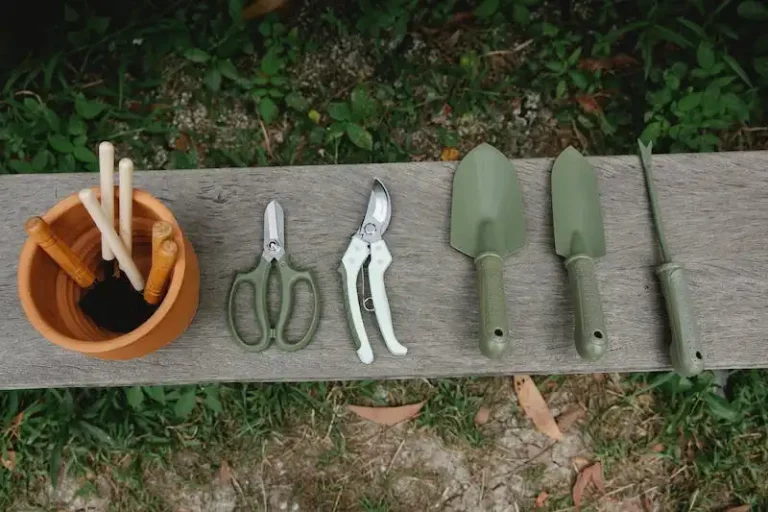When it comes to navigating the vast online world, encountering a 403 error can feel frustrating and confusing. However, understanding why it occurs and what steps should be taken can help alleviate these sentiments. The 403 error, also known as “Forbidden,” essentially means that the user does not have the necessary permissions to access a particular webpage or resource. This issue often goes hand in hand with website security, as it highlights that the user has reached a page they are not authorized to view.
Similar to picking ripe gooseberries, determining the cause of a 403 error requires careful consideration. Just as one must wait for a gooseberry to reach its full maturity before picking, one must also analyze the situation to identify any potential security breaches or access limitations. Like the rich texture and tartness of fully ripe gooseberries, understanding the context and thoughts behind a 403 error can provide invaluable insight into website security and user permissions.
While it may be tempting to immediately pick an error-free fruit or refresh the webpage to resolve the 403 error, this approach is not always the most fruitful. Much like preserving the skins of gooseberries for jams and other applications, it’s crucial to investigate the source of the issue first. In the UK, for example, gooseberries are picked between July and August. Similarly, a thorough examination and recognition of the correct permissions and settings can help resolve a 403 error.
Recognising that different cultivars of gooseberries have different ripening times can also shed light on the 403 error. Some cultivars ripen earlier, while others take longer. Similarly, while an under-ripe gooseberry may be less juicy, it can be sweeter and still worth picking. Understanding the nuances of the error and the ripening process can ultimately help address the issue at hand.
In addition, taking safety precautions is essential when handling both gooseberries and a 403 error. Just as gloves make it easier to pick gooseberries without getting pricked by their thorns, exercising caution while troubleshooting the error can prevent further complications. Moreover, like the importance of refrigeration to preserve gooseberries’ texture and freshness, proper website security measures must be developed to keep online content safe.
Overall, 403 errors may be a common occurrence when browsing the web, but their significance should not be overlooked. This error serves as a reminder of the importance of website security, user permissions, and recognizing the different factors that can contribute to its appearance. By delving deeper into the issue and embracing the lessons learned from gooseberry harvesting, users can improve their online experience and enjoy a safer digital environment.
When should I harvest gooseberries
One helpful technique for recognising ripeness is to gently squeeze a berry between your fingers. If it feels soft and gives under pressure, it is likely ready for harvest. However, if it is still firm, it needs more time to ripen. Another sign to look for is when the berries easily detach from the stems when lightly tugged. At this point, you can use a pair of scissors to cut the berries from the plant.
When harvesting gooseberries, it’s important to wear appropriate protective garments, such as gloves and a hat, to avoid any potentially thorny situations. Gooseberry bushes have thorns, and the berries can sometimes be difficult to reach. Additionally, wearing sunscreen and sturdy footwear is highly recommended, especially if you’ll be spending a lot of time in the garden.
After harvesting, it’s best to refrigerate the gooseberries or store them in a cool container to help preserve their freshness. Gooseberries can also be frozen for longer-term storage. Keep in mind that the thin skins of gooseberries make them more prone to spoilage, so it’s important to handle them with care. When storing or freezing, it’s a good idea to wash and dry the berries thoroughly before putting them into the refrigerator or containers.
The flavor of gooseberries can vary depending on the variety. Some gooseberries have a tartness that is more suitable for culinary use, such as making jams or jellies. Other types have a sweeter flavor that is great for desserts. It’s all about personal preference and the end use. Experimenting with different varieties can lead to delightful culinary experiences.
In conclusion, the timing of gooseberry harvesting depends on your preferences and the purpose for which you are growing them. Pay attention to the signs of ripening, such as the color, texture, and sweetness of the fruits. Harvest them when they have reached full ripeness, and enjoy the variety of uses they offer in your culinary adventures.
403 ERROR
A 403 error means that you do not have permission to access the requested resource on a website. It is a status code that indicates that the server understands the request that you are making, but you are not allowed to access the content.
Imagine you are a gardener and you have a gooseberry bush in your garden. Gooseberries are small fruits that are similar to grapes and have a tart flavor. They are often used in desserts and jams because of their high pectin content.
When the gooseberry bush is fully ripe, the fruits are green and have a slightly yellowish appearance. They are juicy with a thin skin and contain tiny thorns. To protect yourself while harvesting the fruits, it is best to wear gloves and use a pair of scissors or pruning shears to pick them from the bush.
Timing is crucial when picking gooseberries. If you harvest them when they are underripe, they can be quite sour and have a firm texture. On the other hand, if you wait too long, they can become mushy and lose their tartness. The best time to pick gooseberries is when they have reached their full ripeness and have a juicy, slightly firm texture.
One popular cultivar of gooseberries is the dessert gooseberry. These gooseberries are picked when they are fully ripe and have a sweet flavor. They are often used in baking and can add a tangy taste to pies, tarts, and other sweet dishes.
To ensure that your gooseberries are fully ripe, it is important to give them enough sunlight. Gooseberry bushes thrive in sunny locations, and the fruits ripen best when exposed to full sun. They also benefit from regular watering and fertilization to ensure optimal growth.
After harvesting the gooseberries, you can enjoy them fresh or use them in various culinary preparations. They can be eaten as a snack, added to salads, or used in desserts like crumbles and custards. They can also be preserved by making jams or jellies.
In conclusion, a 403 error is an indication that you do not have permission to access the requested resource on a website. It’s like being a gardener who wants to pick ripe gooseberries from a bush but is unable to do so. Just like the gardener must follow certain steps and guidelines to enjoy the delicious fruits, you must follow the necessary procedures to resolve the 403 error and gain access to the desired content on the website.
When Are Gooseberries Ready To Pick
Gooseberries are a popular fruit in the garden, with many cultivars to choose from. Whether you want to eat them fresh, or preserve their tart and tangy flavor in jams and jellies, knowing when to pick them is important.
The gooseberry’s appearance changes as it ripens, with the under-ripe fruit having a small size and green skins. As they ripen, the berries develop a more vibrant hue, usually ranging from red to purple. The flavor also transforms, becoming less tart and more sweet.
Recognising when gooseberries are ready to pick involves more than just the appearance of the fruit. It’s necessary to consider some practical signs that indicate the fruit’s readiness, such as how easily it detaches from the plant, the texture of the berry, and the taste. Generally, gooseberries are ready to be harvested from June to August, depending on the variety and the weather conditions.
The best time to pick gooseberries is when they have reached their full color and size and have a slightly soft texture. Ripe gooseberries are delicate and will bruise easily, so care must be taken when harvesting them. It’s recommended to wear gloves to protect your hands from the thorns and prickles that some gooseberry varieties have.
If you’re planning to use the gooseberries for immediate consumption, you can store them in a basket in a cool place, away from direct sun. They will last a few days like this. However, if you’re planning to use the gooseberries for longer-term storage or for making desserts or other applications, they’re best stored in the refrigerator. Gooseberries can also be frozen for later use.
So, whether you want to enjoy the unique tartness of fresh gooseberries, or transform them into delicious jams and desserts, harvesting the fruit at the right time is essential. By recognizing the signs of ripeness and using the proper equipment, you can ensure a tasty and satisfying harvest.
Deciding When To Harvest Gooseberries
Harvesting gooseberries at the right time is crucial to ensure you get the most out of your fruit. The yellowish colour of the gooseberries is usually an indication that they are underripe. It’s useful to wait until the fruits have reached their full colour before picking.
Recognising when gooseberries are ripe can be a bit tricky, but there are a few key things to look out for. Ripe gooseberries will generally feel slightly soft to the touch and have a high sugar content, which means they’re sweeter. The skins will have a deeper hue, and the tartness will be less pronounced. When you taste a gooseberry, it should have a good balance of sweetness and tartness.
In the UK, gooseberries are typically ready for picking between June and July. The exact timing may vary depending on the variety you grow and the weather conditions in your area. It’s best to keep an eye on the fruits and harvest them when they have reached the desired level of ripeness.
To harvest gooseberries, you’ll need a basket or container to collect them. Make sure to wear proper footwear and protect yourself from thorny branches while picking. Using gardening gloves can be helpful as well. It’s recommended to pick gooseberries individually, gently twisting them off the stem to avoid damaging the fruit or the plant.
After harvesting, you can store the gooseberries for a few days in the refrigerator to keep them fresh. If you can’t use them immediately, it’s also possible to preserve them by freezing or canning. Gooseberries can be used in a variety of recipes, including pies, desserts, and jams.
It’s worth noting that some recipes may call for underripe gooseberries, as their tartness can be useful in certain dishes. However, if eating raw or using in sweet desserts is your preference, it’s best to wait until the fruits are fully ripe before using them.
In conclusion, deciding when to harvest gooseberries is an essential part of growing these fruits. Pay attention to the colour, texture, and taste to determine the ripeness. Harvesting at the right time will ensure you have a bountiful and delicious harvest.




